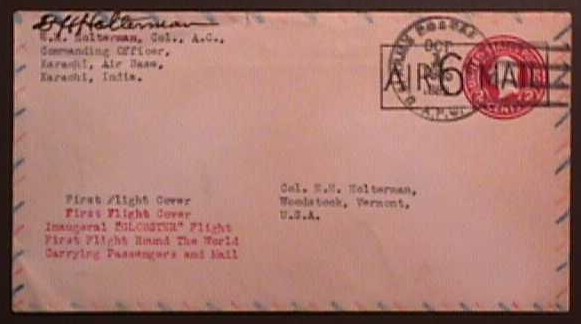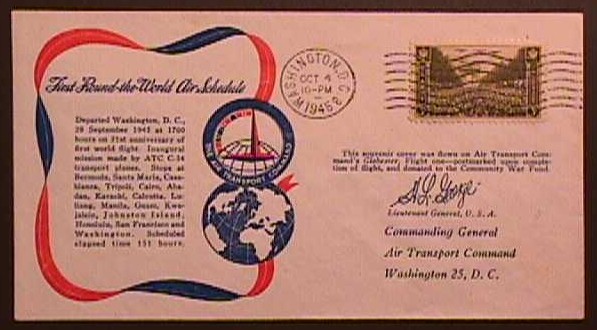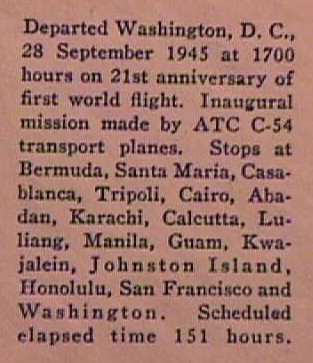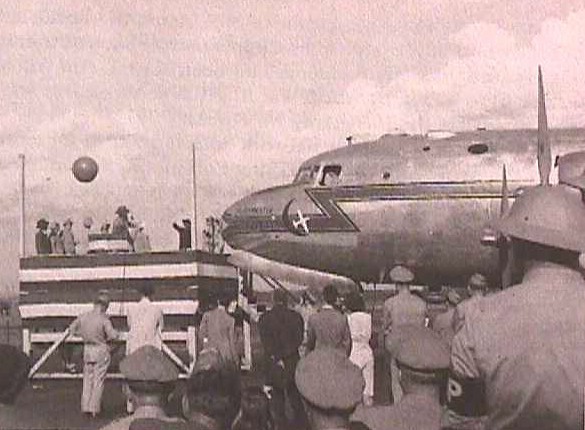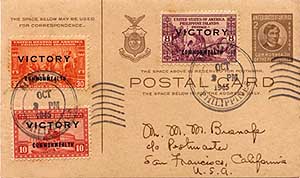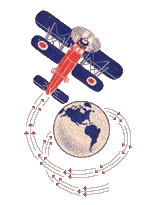Departed Washington, DC 09/28/45 Pilot: Capt. John J. Ohlinger
Bermuda 09/29/45 Pilot: Capt. Roderick R. Elliott
Santa Maria, Azores 09/29/45 Pilot: 1st Lt. Robert W. Johnson
Casablanca, Morocco 09/30/45 Pilot: Lt. Col. Paul M. Norman
Tripoli, Libya 09/30/45 Pilot: Lt. Col. Paul M. Norman
Cairo, Egypt 09/30/45 Pilot: Maj. Thomas M. Scoggina III
Abadan, Iran 09/30/45 Pilot: Maj. Thomas M. Scoggina III
Karachi, Pakistan 10/01/45 Pilot: Maj. Thomas L. McKissock
Calcutta, India 10/01/45 Pilot: Capt. Richard H. Drake
Kunming, China 10/01/45 Pilot: Capt. Richard H. Drake
Manila, Philippines 10/02/45 Pilot: Maj. James S. Sammon
Guam 10/02/45 Pilot: Capt. Marion H. Click
(Engine trouble necessitated return to Guam)
Kwajalein, Marshall Isl. 10/03/45 Pilot: 1st Lt. Joe L. Pakarovich
Honolulu, HI 10/03/45 Pilot: Capt. Kenneth W. Healy
San Francisco, CA 10/04/45 Pilot: Maj. James A. Worrell Jr.
Arrived Washington, DC 10/05/45
